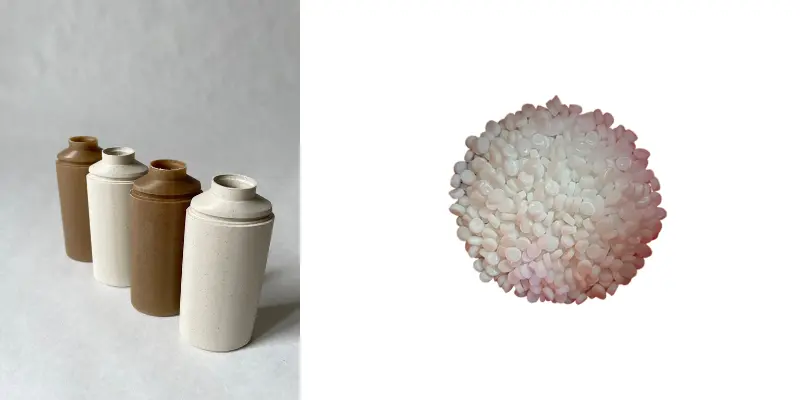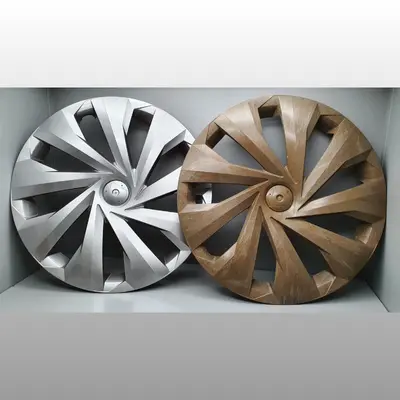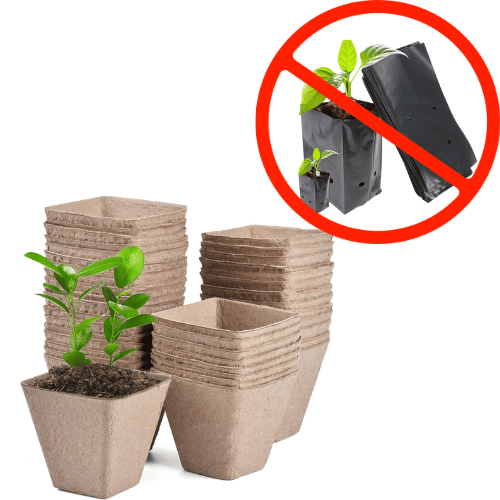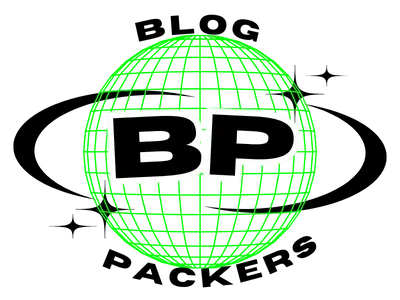Rice husk plastic has gained significant attention in recent years as a sustainable packaging material.
With the growing concerns of plastic pollution and environmental degradation, packaging industries are looking for biodegradable and compostable solutions.
Rice husk plastic packaging offers the same solution by converting agricultural waste products into strong, durable, flexible and eco-friendly packaging materials.
Introduction
Rice grows worldwide and produces more than 700 million metric tons annually.
At every ton, approximately 200-250 kilograms of rice husk are generated as a byproduct, which is often burnt by farmers for their convenience or to get rice husk ash.
This ash is rich in minerals and nutrients, such as potassium, phosphorus and calcium that act as a natural fertilizer for the soil.
Burning these rice husks at farms may provide some benefits for the soil, but it will have lots of environmental issues, like air pollution, contaminating the surrounding area with particulate matter and the release of potent greenhouse gases.
So, by converting agricultural waste products into valuable plastic material, we can reduce air pollution, preserve our limited natural resources, like oil and gas and establish a circular economy standard for the future.
What is Rice Husk Plastic Packaging?
Rice husk plastic packaging is an innovative and eco-friendly alternative to traditional plastic packaging. It is made by mixing rice husks with plastic resin to create a composite material that is strong, durable and biodegradable.
Rice husks are a natural byproduct of rice farming.
Creating composite plastic material from this agricultural waste is sustainable and cost-effective.
Unlike petroleum-based plastics, rice husk plastic can decompose naturally without leaving toxic residues in the environment.
Why Rice Husks?
Abundant: Every year, more than 185 million tons of rice husks are discarded globally.
Durable: They are rich in silica, which makes them strong and durable.
Upcycle: Converts waste into valuable products.
How to Make Rice Husk Plastic?

The manufacturing process of rice husk plastic starts with the collection of rice husks, which are then mixed with polymer resin and additives.
To get the desired plastic products, blending and compounding are also important steps to consider.
1. Rice Husk Collection
The first step in the manufacturing process is to collect rice husks.
Cleaning: After collecting rice husks, they must be washed with water to remove any dirt, stones, or other foreign particles that could affect the quality of the final products.
Drying: After cleaning, the rice husks are dried to reduce the moisture content (<10%). High moisture content in rice husk can create microbial growth and decay the materials.
So, it is necessary to maintain the optimum moisture in rice husk before processing.
2. Grinding and Pulverization
After cleaning and drying, the next step is grinding them into smaller particles.
The rice husks are crushed into fine particles ranging from 50–200 microns using specialized equipment like hammer mills or grinders.
The size of particles plays an important role in the quality of composite plastic. Small-sized particles integrate effectively in the polymer matrix, which creates stronger materials.
3. Mixing with Plastic Resins
After grinding, the rice husk powder is mixed with plastic resin to form the composite material.
Based on the application, different plastic resins are used, like Polyethylene (PE), Polypropylene (PP), and Polylactic acid (PLA). However, the use of Polyethylene (PE) and Polypropylene (PP) creates microplastic upon decomposition, so try to avoid them in manufacturing.
Related Post: Is PLA Plastic Food Safe
Additives may also be added to increase the functional properties of plastic material.
The exact proportions of these components can be different for different applications. A typical formulation might look like this:
Rice Husk: 20-40%
Polymer: 50-70%
Additives and Plasticizers: 5-10%
4. Blending and Compounding
In this step, the rice husks and plastic resin are mixed until you get content uniformity through the polymer matrix.
Extrusion: The mixture of rice husks, plastic resin and additives is then fed into an extruder, where temperature and pressure are applied.
Ensure optimum heating in the extruder, otherwise, it may degrade the quality of husks and biopolymer.
5. Molding and Shaping
After blending and compounding, the mixture is ready to mould.
Injection Molding: It is one of the most common methods for molding plastic materials.
In this process, the molten composite material is injected into a mold under high pressure and temperature to create the desired shape.
It is used to create rigid containers, furniture, packaging materials, and trays.
Extrusion Molding: It is another method to create long and continuous plastic products, such as sheets and plastic rods.
Cooling and Solidifying: After molding, the rice husk plastic is cooled and solidified.
6. Quality Test
The final step in the manufacturing process of rice husk plastic is the quality test, such as tensile strength, impact strength, elongation test, compostable test and many more.
It is essential to ensure that the rice husk plastic products meet industry standards, especially in the food and pharmaceutical industry.
Rice Husk Plastic Products
Rice husks are now increasingly used to make innovative and eco-friendly plastic products.
The demand for sustainable materials is growing every day, where rice husks are the best available resource for various industries.
Let’s explore the products made from rice husk plastic.
1. Rice Husk Plastic for Food Packaging
Rice husk plastic is used to create biodegradable or compostable food containers, trays, plates and cups.
These items are safe, strong, durable, and can decompose easily compared to petroleum-based plastics. Additionally, it is free from Phthalates and BPA, eliminating the risk of leachability into the food.

2. Rice Husk Plastic Cutlery
They are the best available option for social events, foodservice, and catering industries, where single-use plastic items are improperly used and discarded.
Rice husk plastic cutlery possesses the same strength, flexibility and durability as traditional plastic items. Moreover, they offer safe disposal without creating environmental pollution.
3. Rice Husk Plastic Furniture
Beyond food packaging and cutlery, rice husk plastic is being used in home décor and furniture.
Chairs, tables and other decorative items made from rice husk plastic are the classic example of sustainability or a green lifestyle.
The furniture made from rice husk plastic is light and strong, which are making it a great option for people who often move or like to change their home or office.
Rice husk plastic is also used to make decorative items like plant pots. Its porous nature allows better airflow, which helps them to grow healthier.
4. Rice Husk Automotive Components
Lots of automotive parts are now made from rice husk plastic, which makes the automotive industry sustainable.
Interior Panels and Dashboard Parts: Many giant car manufacturers are using rice husk plastic in their vehicles’ interiors and exteriors, such as dashboard components, trim pieces, wheel plates, door panels, and many more.
It also reduces fuel consumption and carbon emissions while increasing car mileage since it is lightweight.

Car Seats and Upholstery: Some companies are also manufacturing seat cushions and covers for cars and vehicles.
Material strength, durability, biodegradability, and rustic charm make it an ideal choice for the eco-conscious customer.
5. Rice Husk Plastic for Construction Materials

Insulation Materials: Rice husk plastic inherently possesses acoustic and thermal insulation properties.
With these benefits, materials made from rice husk plastic help to improve the energy efficiency of buildings while providing noise-cancelling features for peaceful sleep.
Furthermore, Rice husk plastics are also used to make bricks and tiles, which reduces the use of cement and other resource-intensive materials.
Exterior Siding and Decking: Some manufacturers have started to create rice husk plastic products for exterior applications, such as decking boards and siding panels.
These composite plastics are resistant to weathering, rot, and termites.
6. Rice Husk Plastic for Agricultural Products
The rice husk plastic offers a practical solution to farmers and the agricultural industry.
Seedling Pots and Trays: Biodegradable seedling pots made from rice husk plastic are an excellent option for growing plants in greenhouses or nurseries.
When planted in soil, these pots decompose naturally, while enriching soil with water, CO2 and biomass. This is the thing how we can eliminate the single-use plastic bags in nurseries.

Agricultural Mulch Films: Mulch films are used to cover the wet soil in farming fields. These films help to retain moisture, suppress weeds and improve soil quality.
The biodegradable nature of rice husk plastic film makes it an ideal solution for organic and sustainable agriculture.
Benefits of Rice Husk Plastic Packaging
By using rice husk plastic instead of petroleum-based plastic, we can get several benefits as mentioned below.
1. Environmental Benefits
Biodegradable: Unlike traditional plastic, which can take hundreds of years to decompose, rice husk plastic decomposes within a few weeks to months.
This helps to reduce the plastic pollution in landfills and oceans.
Reduced Carbon Footprint: Rice husk plastic is made from agricultural waste, which means it uses fewer resources compared to petroleum-based plastics.
Petroleum-based plastics are made from non-renewable natural resources like oil and gas, which require drilling into the earth, causing environmental harm and depleting our planet’s resources.
Less Pollution: Rice husks are often burned by farmers, which leads to air pollution.
By using rice husks for plastic production, we can eliminate these harmful practices and contribute to a cleaner and greener future.
2. Economic Benefits
Cost-Effective: Since the rice husks are an abundant waste product of rice farming, they are often available at a lower price.
This makes rice husk plastic cheaper than traditional plastics on a larger scale of production.
Job Creation and Rural Development: The use of rice husks for plastic production can help farmers to get additional income, especially in rice-growing regions.
It opens new business opportunities for farmers, waste collectors and manufacturers.
Sustainability as a Selling Point: Introducing sustainable packaging and products makes it easier for businesses to stand out in a crowded market, as sustainability has become a gold standard for influencing eco-conscious consumers.
3. Functional Benefits
Improved Durability: Rice husks are rich in silica content, which provides excellent strength and durability to the final products.
Thermal and Acoustic Insulation: Rice husk plastic has thermal insulation and noise-dampening properties.
This makes it useful for applications like automotive interiors and construction materials, where heat resistance and sound reduction are essential.
4. Health and Safety Benefits
Leachability: Traditional plastics often contain harmful chemicals like BPA and phthalates, which can leach into food and beverages.
With rice husk plastic, you can avoid these chemicals, making it a healthier option for people and the planet.
Reduced Chemical Exposure: The manufacturing process of rice husk plastic uses fewer chemicals as compared to petroleum-based plastic, which results in less exposure to toxic chemicals, improving the health of factory workers.
By switching to rice husk plastic, we can take a significant step towards a cleaner, greener and healthier future.
Challenges of Rice Husk Plastic Packaging
Rice husk plastic also has several challenges that need to be addressed for its widespread application.
1. Cost of Production
Although rice husks are an abundant and inexpensive waste product of rice farming, their processing for plastic manufacturing is costly because of high-tech machinery, trained manpower and the use of biopolymers.
2. Availability of Rice Husks
Rice farming is seasonal and getting rice husks in larger quantities is difficult during the off-season.
These shortfalls of rice husk may hamper production activities and disrupt the manufacturing operations.
3. Material’s Limitations
The rice husk plastic is hydrophilic (water-absorbing) in nature because of its cellulose content.
As a result, they absorb moisture, which may affect material strength and durability.
This is very common in a humid climate. However, manufacturers can use hydrophobic coating to resolve this issue.
4. Compatibility with Plastic Resins
Rice husk composite plastic is made by mixing rice husks with various resins, such as polyethylene (PE), polypropylene (PP), or biodegradable plastics like PLA, PHA, PBAT, and PBS.
However, the compatibility of rice husk with polymer matrix may sometimes be challenging and complicated.
Proper blending and compounding are very crucial for getting quality and functional products.
5. Market Acceptance
Despite growing awareness and demand for sustainable products, businesses still struggle to convince customers to switch from traditional plastics to rice husk plastic due to its inferior look, durability and higher costs.
6. Recycling and Disposal Issues
Rice husk plastics are available in both categories, like home compostable and industrial compostable. For industrial compostable plastics, specific conditions are required to decompose the material into water, CO2, and biomass.
Industrial composting facilities are limited and improper disposal of rice husk plastic may release methane gas, which is more potent than CO2.
With ongoing innovation, investment in research and greater awareness, rice husk plastic can become a key player in creating a more sustainable packaging industry.
Cost of Rice Husk Plastic Packaging
The cost of rice husk plastic packaging depends on various factors, like the cost of raw materials, manufacturing processes, resin selection and scale of production.
Although rice husk plastic is made from agricultural waste, its production can be sometimes costly as compared to petroleum-based plastic for various reasons.
Here’s a breakdown of the factors affecting the cost of rice husk plastic packaging.
1. Raw Material Cost
Rice Husk Availability: Rice husks are typically an abundant byproduct of rice farming, often available at a lower cost in rice-producing regions.
However, the cost can depend on the season and local availability.
Transporting rice husks from rural areas to the manufacturing site increases the cost.
Processing Costs: At the front, rice husks are inexpensive, but their processing, like cleaning, drying, and grinding, may involve complex machinery setup, which adds to the cost.
Resin Costs: The type of resin used in the production of rice husk plastic also plays a significant role in determining the overall cost.
For example, biodegradable plastics like polylactic acid (PLA) are often more expensive (3 times) than polyethylene (PE) or polypropylene (PP).
2. Manufacturing Process
Complexity of Production: Rice husk plastic manufacturing requires specialized manpower and processing techniques for blending and compounding of rice husk with plastic resin.
Additives: Manufacturers use plasticizers, stabilizers and flame retardants to increase the material properties.
These additives can increase the cost of production, as they need to be carefully chosen to ensure they do not compromise the material’s eco-friendliness.
3. Scale of Production
Economies of Scale: Higher production volumes increase production efficiency and reduce material waste. This can help to lower the final cost of products.
Additionally, the transportation cost of rice husk from farming regions to manufacturing sites can also be reduced.
4. Market Demand and Adoption
Market Readiness: Rice husk plastic packaging is still an emerging technology and the demand may not be high enough as traditional plastic packaging.
Lower demand can result in higher per-unit costs due to limited production and the need for specialized equipment.
Consumer Awareness and Willingness to Pay: While the environmental benefits of rice husk plastic are simple and clear, consumers may not always be willing to pay a premium price for sustainable products.
If consumers are not happy to pay more for eco-friendly packaging, companies may struggle to stay in the competitive market.
Top Manufacturers of Rice Husk Plastic Packaging
Several companies across the world are manufacturing rice husk plastic products from agricultural waste.
1. Oryzite
Oryzite is a pioneering company that transforms rice husks into composite plastics.
Oryzite has a patented process to convert rice husks into a powdered bio-filler that can replace up to 85% of conventional plastic in various thermoplastic categories.
This innovative material not only reduces reliance on petroleum-based plastics but also offers environmental benefits such as lower CO₂ emissions, energy savings during production, and enhanced mechanical properties like improved dimensional stability and flame retardancy.
Plastic products made from Oryzite are used in automotive, construction and consumer goods. Their sustainable solutions help manufacturers to lower their environmental impact.
2. Modern Mill (USA)
Modern Mill is manufacturing construction materials from rice husks.
Their product line ACRE™ is a composite material made from upcycled rice husks and is used primarily in construction applications, such as decking, siding and trim.
ACRE™ is durable, lightweight and fully recyclable, which provides a more sustainable option over the traditional wood and plastic materials.
3. NatureWorks (USA)
NatureWorks is a global leader in developing sustainable materials made from agricultural byproducts like rice husks.
They are known for their Ingeo™ biopolymer, which is a renewable plastic that can be produced using rice husks and other natural materials.
They focus on reducing the environmental impact of plastics by creating bioplastics that are both biodegradable and compostable.
4. Rice Husk Composites (Thailand)
Rice Husk Composites is a company based in Thailand that manufactures rice husk plastic composites for use in a variety of industries, including packaging, automotive, and construction.
The company produces sustainable packaging solutions that are biodegradable and reduce the need for petroleum-based plastics.
Their rice husk-based products are gaining popularity due to their environmentally friendly nature and durability.
5. Green Dot Bioplastics (USA)
Green Dot Bioplastics is a leading producer of biodegradable plastics, including those made from agricultural waste like rice husks.
Their Terratek® line of products is designed to be compostable and environmentally friendly, which are providing solutions for industries to ditch traditional plastics.
The company offers rice husk-based products for use in packaging, foodservice items and consumer goods.
Conclusion
Rice husk plastic packaging is a smart and eco-friendly alternative to traditional plastic. It is better for the environment, cost-effective and can be used in many different ways. This makes it a promising option for the future of packaging in various industries.
Still, there are some hurdles to overcome, like higher production costs and limited availability of raw materials. But as technology improves and more people look for greener choices, rice husk plastic has the potential to reduce plastic waste and help us move toward a more sustainable world.
If there’s any topic you think I should include in the next update, feel free to drop it in the comments—I’d love to hear your thoughts!
